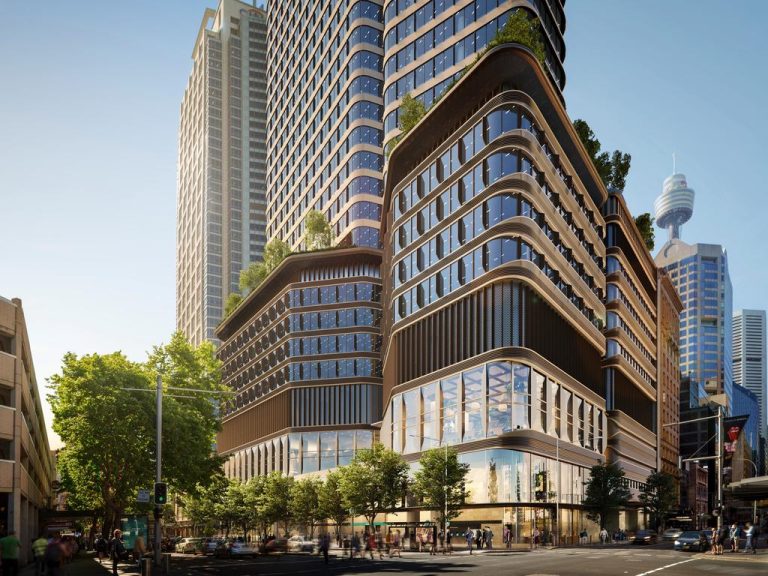First-time investors switching from residential to commercial

Commercial property is the new black. That’s according to industry experts who say the current combination of cheap money and record-low residential property yields is driving a “definite move” to the sector by commercial first-timers.
Economists, researchers, commercial real estate services firms and buyer’s agents have noted the trend across the country, especially in the sub-$1.5 million price bracket.
REA economist Anne Flaherty said the number of people and businesses looking to buy commercial property on realcommercial.com.au has surged in the past 12 months. And while it’s not possible to track precisely how many of these are commercial “newbies”, the anecdotal evidence from industry is strong.
“I would definitely say we are seeing an interest in the commercial property space from people who may not have thought about investing in it in the past,” she said.
“Those who have previously relied on residential properties to provide income seem to now be looking to achieve higher yields through commercial because the numbers stack up,” she said. That’s because, with well-documented skyrocketing price growth in residential property, rental yields have fallen.
Ms Flaherty said the increased volatility in the stock market – where many looked to grow their wealth previously – is also a factor in the shift.
Demand up three-fold on pre-pandemic levels
Scott O’Neill, founder of buyer’s agent firm Rethink Investing, said in his business demand for commercial property has increased three-fold compared to 2019.
He said investors are being drawn to the superior return on investment commercial is offering compared to residential property and shares.
“The post-COVID climate in Australia has supercharged property. Interest rates are low, so cash is cheap, and high-quality commercial assets are now scarce due to increased demand. That’s because people have more savings, as they’ve been forced to stay home and are now looking to put their money to work,” he said.
“All of these factors have contributed to a tightening of the market and have resulted in yield compression for commercial property and is the reason that commercial property is far outweighing the return on investment that residential property can deliver,” Mr O’Neill said.
It’s a view backed by commercial real estate services company CBRE, which has seen the number of first-time entrants into the sector “surge over recent months”.
“Owner/occupiers in the residential sector are paying prices that are not appealing for investors from a return standpoint,” Scott Hawthorne from CBRE’s Melbourne city sales and development sites team said.
“Unless it forms part of a strategic acquisition, such as an adjoining landholding, where long-term development opportunities may be unlocked, there are more appealing returns and better deals to be made in the commercial sphere.”
Location and strong leases driving interest
New investors are often looking outside the highest-priced markets of Sydney and Melbourne.
“We are seeing a pretty even spread of demand towards Brisbane, Perth, Adelaide, Canberra, and major regional centres,” Mr O’Neill said.
Industrial, medical and essential retail, which performed strongly through COVID, are especially popular. But asset class isn’t everything, Mr O’Neill said.
“It’s more of a strong lease covenant that measures the attractiveness of an asset for a first-time investor. For example, offices might not be as popular right now, but if it was a suburban office to a solicitor, accountant, or government tenant on a plus-five year lease … this would be attractive.
“On the other end of the spectrum, vacant assets or those with very short-term leases are less attractive to first-time investors.”
Steady returns allows for wealth growth
Beauty therapist Helen Tarrant began investing in commercial property in 2012 when she bought a $360,000 restaurant in north Sydney with an 8% rental return. As she was self-employed at the time and her borrowing capacity was limited, she said commercial property offered higher yields with tenants paying for the outgoings.

Property investor Helen Tarrant.
“I was keeping money after paying all my outgoings. I would never have got that kind of cash flow with a one-bedroom studio,” Ms Tarrant said.
“What people don’t realise is this kind of cash flow makes it much easier to accelerate the growth in your portfolio because you can keep borrowing as long as the cash flow is good.”
Ms Tarrant went on to buy another two commercial properties in 2014 and split the two upper north shore offices into four office spaces which provided four sources of income. She says the secret to success for her property investing has been to target properties with multiple tenants, great cash flow and easy accessibility.
“What I look for depends on the type of property. With retail, you want something that’s driving foot traffic there. Maybe it’s near an Aldi or a Coles.
“With warehouses, you want good access for trucks, maybe something near a highway.
“And then with offices, it doesn’t have to be in the CBD, but you have to look at who the other tenants are in the building, are they paying their rent … the safest tenants are doctors and lawyers,” she said.
Ms Tarrant sold her beauty business and is now a buyer’s advocate with 52 tenants in 20 different commercial properties around the country.
Trend emerged last year, is continuing
Vanessa Rader, head of research for Ray White corporate commercial, said the “definite move” emerged strongly during lockdown last year.
“The volumes of sales in the sub-$1.5 million price range really propped up the whole commercial market, as the larger players sat on their hands and opted for a wait-and-see attitude,” she said.
“A lot of these buyers last year were cash-rich and looking to diversify away from other investment options, such as shares, given the volatility in the global economy. Lending was still a little restrictive last year, so it was those cash-rich buyers who speculated across any asset class or location looking only for returns.
“Fast forward to this year, the trend has not changed, however, the ability to obtain finance and the rocketing residential prices which have pressured residential yields down has seen even more first-time buyers descend on the commercial market,” Ms Rader said.
Mr O’Neill agreed flexible lending options are key in 2021.
“There are lending products such as ‘lease doc’ loans out there that allow you to get a commercial loan even if you don’t have a job.
“As long as there is a good lease on a property and you have access to a cash deposit, you can essentially get a loan for a commercial asset. This is not the case for residential property,” he said.







